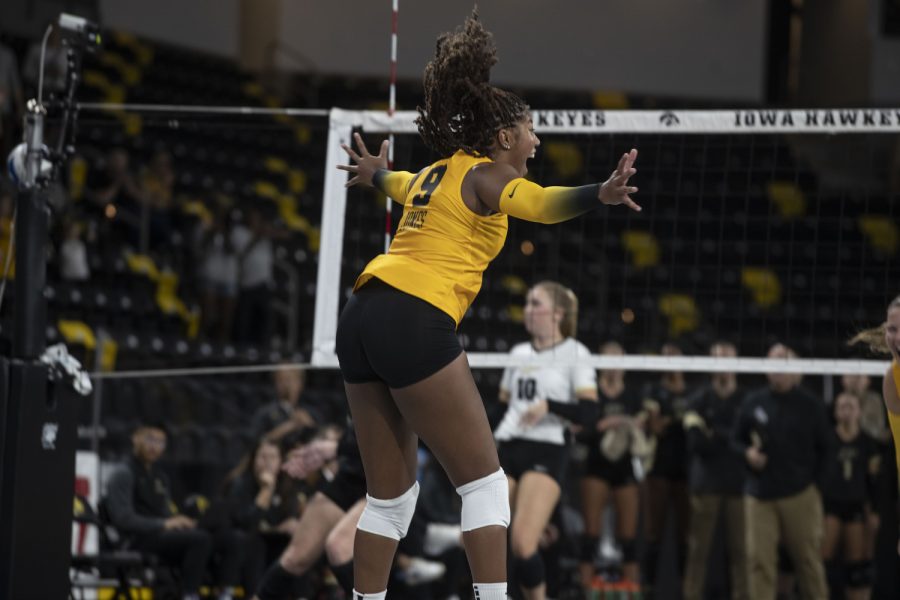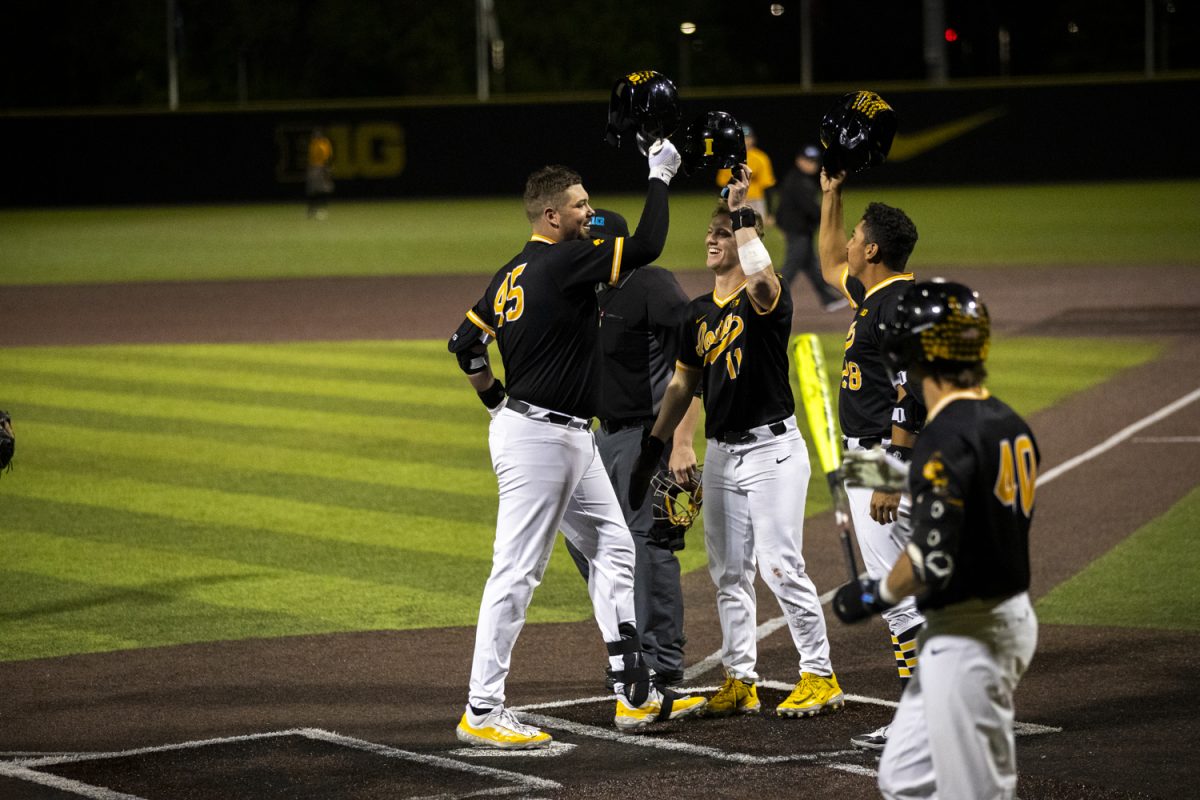Johnnie Dowling slapped a pitch into shallow center field for a single with the game tied, 3-3, on March 24. It was a routine play for Wisconsin’s Maria Van Abel; the Badger scooped the ball up and casually tossed it back to hurler Cassandra Darrah.
But then Dowling saw Wisconsin’s center fielder, second baseman, and shortstop all had their backs to second base as they strolled back to their positions. Darrah was in the circle, ball in hand, but wasn’t paying attention as she kicked at the dirt in front of the rubber.
Dowling took off and reached second base standing up.
Head coach Marla Looper gives all her base-runners a green light, allowing them to run without a command from a base coach. She believes in letting her athletes make those decisions because situations such as Dowling’s heads-up sneaky base running — which led to the winning run — wouldn’t happen if the Hawkeyes waited around to be told what to do.
"Growing up, they’re taught, ‘Run here, then run there, but don’t do it until I tell you,’ " Looper said. "They’re robots. I want my players to see the game, feel the game, and live it. To do that, they’ve got to be able to do those things on their own."
Looper gives her players control on defense too — catchers Liz Watkins and Katie Holmes call their own pitches.
Watkins began calling her own games for the first time in her life when Looper took over the team from the retired Gayle Blevins in the fall of 2010. Relaying the pitches from the dugout to the catcher to the pitcher was like a game of telephone to Looper.
Watkins said she had gotten to the point where she knew what Blevins’ pitching coach, Shane Bowman, was going to call before he actually flashed the sign, so the transition to Looper’s new hands-off method was merely a matter of believing in her own decisions behind the plate.
"I have more power, and I’m more in the game instead of just relaying signals or calls," Watkins said. "For everybody around the field, it helps us have more confidence in ourselves, to be able to be in that game mindset — being able to know what batter is up, what she hit last time, what we have to do now. Just being mentally present."
Pitcher Chelsea Lyon said the direct catcher-to-pitcher communication helps her work more efficiently.
"When Liz is thinking the same thing I am, we’re in tune with each other," Lyon said. "When we get to the point that she’s thinking one pitch and I’m thinking the same thing … just repetition after repetition — then we pitch really well."
Giving the catchers control is a benefit in thwarting the opposing team as well. Softball teams often designate players in the dugout to watch the opponents’ hand signals and decipher what pitch is coming. But when the catcher is flashing her fingers hidden between her legs, the "call-pickers" can’t see the signals.
Looper said it only makes sense to let her players play for themselves. She said she prefers to teach everything that needs to be taught during the week and then let the players apply those lessons in the game without much interjection from the dugout.
"I don’t know how the pitcher is feeling about each pitch … the catchers behind the plate have a better feel of that as the game is evolving in the middle of an inning," Looper said. "They’re able to have that comfort to have the game and adjust as it goes on, versus having to look over at me and say, ‘Coach, it’s not working.’
"It just takes so much time, and it doesn’t allow them to play the game."
Follow DI softball reporter Molly Irene Olmstead on Twitter.






